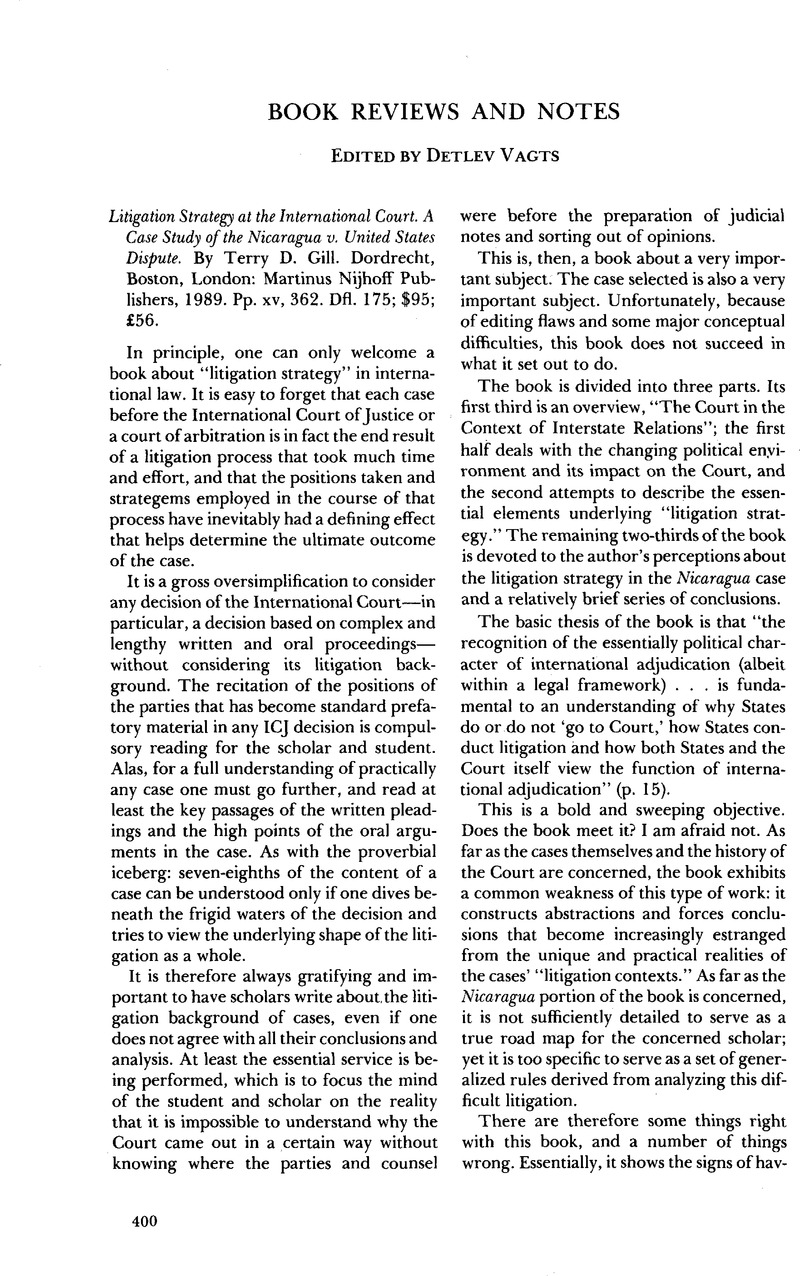Published online by Cambridge University Press: 27 February 2017

1 It should be noted that Gill's supervisors were no less than Leo Bouchez and Shabtai Rosenne, and that Gill has also coauthored the fourth edition of a handbook on the Court with Rosenne: T. GILL & S. ROSENNE, THE WORLD COURT, WHAT IT IS AND HOW IT WORKS(4th rev. ed. 1989); see the book under review at p. 119 n.151.
2 In Elettronica Sicula S.p.A. (ELSI) (U.S. v. Italy), 1989 ICJ REP. 15 (Judgment of July 20), brought by application under the compromissory clause of a treaty, the selection of a chamber was possible only because of the close relationship of the two parties and the fact that, in spite of having been brought by application, the case in fact manifested “real consent” on both sides.
3 See Highet, Evidence, the Court, and the Nicaragua Case, 81 AJIL 1, 45-46 & n.230 (1987).